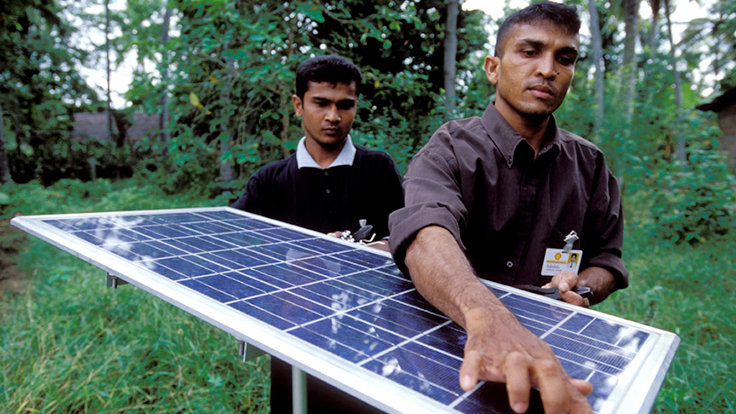The Strategic Framework for Development and Climate Change (SFDCC) approaches solutions through country-led plans while staying within the broader framework provided by the United Nations Framework Convention on Climate Change (UNFCCC). The World Bank helps countries to see what works, and how, and then sharing that learning with others. Over 60% of all Country Assistance Strategies (CASs) addressed climate-related issues.
Latin America and the Caribbean client countries were among the first to scale up their engagement with the Bank Group in addressing climate change. This started with analytical work to understand the impacts of climate change, but now the region exemplifies how the full suite of Bank Group products, instruments, and capabilities can be used to address the growing threat of climate change. The region’s climate change portfolio includes 130 activities ranging from innovative catastrophic insurance schemes to concessional finance for clean technology, totaling $2.5 billion.
Countries in the Middle East are focusing on adaptation measures like modernizing irrigation, supporting farmers’ access to technology, and increasing institutional capacity. The Middle East and North Africa Climate Change Strategy was one of the first to be developed in the Bank. The Yemen Country Assistance Strategy includes addressing climate change as one of its main objectives.
The South Asia Region has a diverse set of priorities across countries – for example, assisting India in the development of weather-based crop insurance. There is a move towards regional cooperation with From Kathmandu to Copenhagen, a very high profile conference with focus on the risks of climate change in the Himalayas and the gains and opportunities from regional cooperation. Strategic support being provided to countries on climate change.
In Africa, many countries are focusing on integrating climate resilience and land use; in Ethiopia, for instance, there is a project promoting community-driven land and watershed management. There is also progress in integrating disaster risk and adaptation programs, for example in Malawi, Kenya and Ethiopia. There is work on integrating river basin management, regional grids and power development the Niger, Senegal, Zambezi and Nile River Basins, as well as on Lake Victoria.
The impact of climate change in the Europe and Central Asia Region will be more significant than expected due to a lingering post-Soviet legacy of environmental mismanagement and the poor state of much of the Region’s infrastructure, leaving the countries poorly prepared to adapt. The Region is improving understanding of science of climate change, providing decision support tools and developing strategy to identify and manage risks in vulnerable countries.

